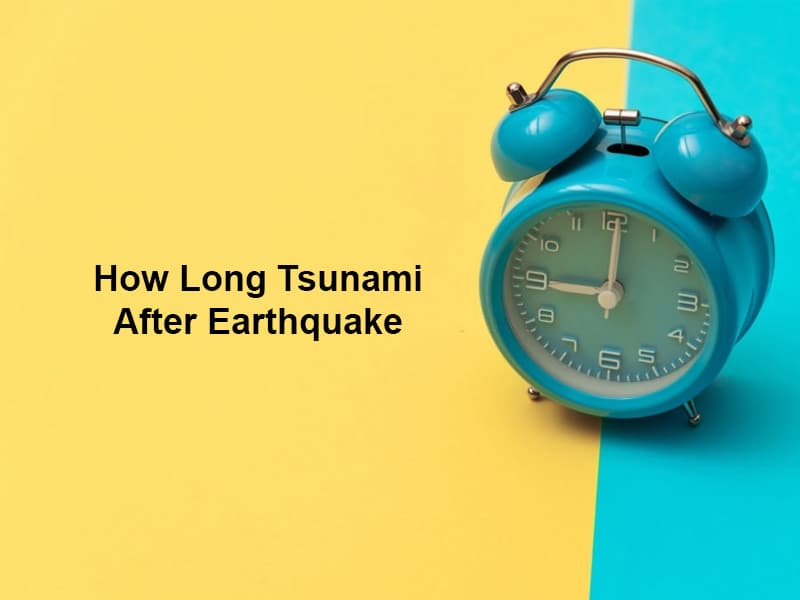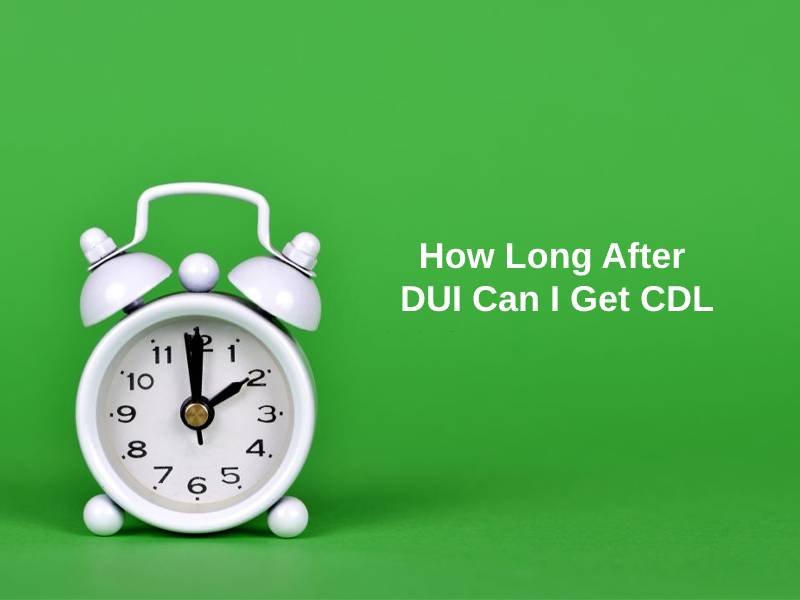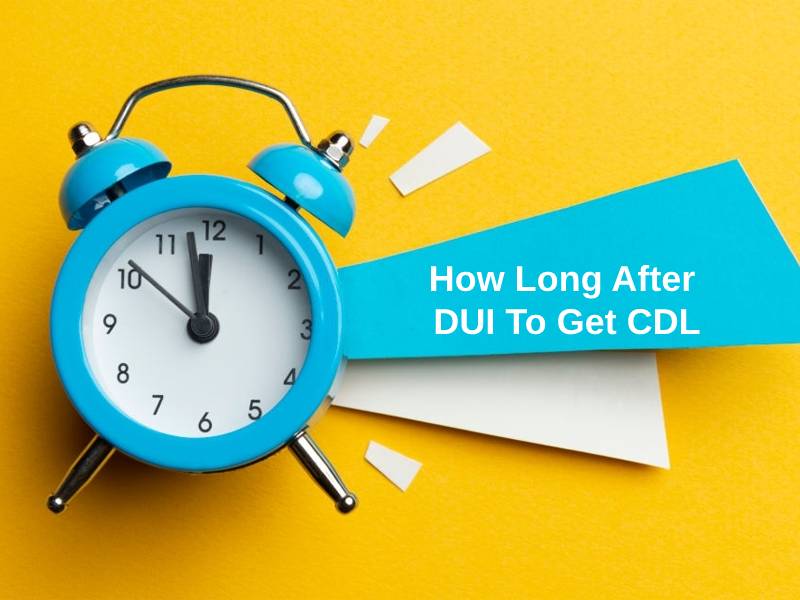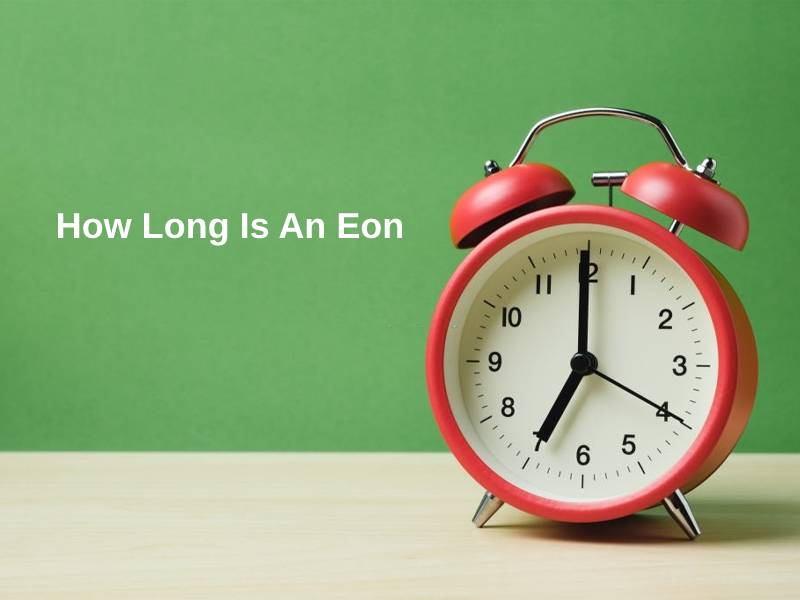Exact Answer: 5-30 minutes
The word ‘tsunami’ is derived from the Japanese language. ‘Tsu’ means harbor, while ‘nami’ means waves.
Tsunamis are essentially huge and long waves that are the result of a sudden displacement of water in the ocean. This displacement may be caused by other calamities such as earthquakes, landslides, and many more.
Tsunamis are extremely dangerous and life-threatening. Tsunamis have the ability to kill thousands at once and destroy a large section of land, along with its buildings, houses, and more.
An earthquake, like its name, suggests, is basically when the land shakes uncontrollably as a result of two blocks of earth that suddenly shift against one another.

How Long Tsunami After Earthquake?
| Location of earthquake | Time taken for tsunami to come after earthquake |
| Far offshore | Few hours |
| Locally | 5-30 mins |
The term tsunami is used to describe a series of really long and large waves. A tsunami is caused by a sudden displacement of water inside the ocean. This sudden displacement may be the result of earthquakes, volcanic eruptions, landslides, and many more events.
These calamities generate such a huge amount of force that causes waves in the ocean, that travel outward in every direction possible, away from the source of the force.
The difference between a tsunami and a wind-driven wave is that a wind-driven wave only crosses through the highest layer of the ocean, while a tsunami travels through the whole column of water in the ocean, from the floor to the surface.
A majority of tsunamis are the result of massive earthquakes. This is supported by research from the Global Historical Tsunami Database, which states that more than 80% of potential tsunamis were caused by earthquakes, from 1900 onwards.
The earth’s crust is split into many pieces that are called the tectonic plates. These tectonic plates tend to constantly move, and grind against each other when they meet. The boundaries at which they do so are called faults. When the tectonic plates slide past each other and come into contact with rough rocks in the middle, the tectonic plates can crack even more. This creates more faults.

Sometimes, the pressure at the fault region becomes too strong to hold together, and the rocks near the fault rip apart at a high speed. When the two plates on either side of the fault separate to release the built-up pressure, the energy that is released, then reaches the surface and causes an Earthquake.
When the earthquake occurs offshore into the sea, it takes at least a few hours for the tsunami to reach the land.
When the earthquake occurs locally, then the tsunami can occur anywhere from 5 to 30 minutes after the earthquake.
Why Does It Take That Long For Tsunami After Earthquake?
Tsunamis that are caused by earthquakes are known to be the harshest tsunamis. The most dangerous tsunamis are the result of shallow but large earthquakes. These earthquakes have either their fault line or epicenter that is on the floor of the ocean or nearby.
These types earthquakes normally happen in locations where there is tectonic subduction in the boundaries. This leads to tectonic plates that collide often. When they collide, they slide past one another with such force, that major areas of the ocean floor can get displaced or tilted. This vertical displacement in the ocean can heavily affect the ocean column, thus generating a tsunami.
These waves have so much energy and power that they can travel at a really high speed and can travel long distances.
A tsunami can travel at a speed of up to 500 miles per hour out on the sea. At this point, they will not be very tall. But when they enter the shallow water located in coastal shorelines, their speed decreases to 20-30 miles per hour. However, their height can increase drastically, and they become more energized because their currents become stronger.

This is why off tsunamis caused by offshore earthquakes take longer to reach land, while local earthquakes cause tsunamis that arrive even under 5 minutes.
Tsunamis are extremely destructive as their volume and speed are much greater than typical waves. They can carry away cars, pull in people, break down buildings, and more.
So it is always best to heed the tsunami warnings and evacuate before it’s too late.
Conclusion
In conclusion, we can understand that the duration between an earthquake and the resulting tsunami highly depends on where exactly the earthquake took place. If the earthquake happens offshore, then the tsunami takes a few hours before it arrives on land.
If the earthquake happens on the sea, you have anywhere between 5 minutes to 30 minutes, before the tsunami arrives on the coast.
The tsunami which occurred in 2004, in Sumatra, Indonesia, is considered to be one of the worst tsunamis in history, as it left around 230,000 fatalities. Another example is the 2011 tsunami which happened on the North Pacific Coast, Japan.





















The article highlights important factors related to earthquakes and tsunamis. Well-researched and rich in detail.
The detailed insight provided here is much appreciated. Thanks for sharing.
The scientific explanation provided here is great. I appreciate the detailed analysis of the tsunami-earthquake relationship and the reasons for different time intervals for tsunami occurrence.
Absolutely, the scientific depth of this article is commendable.
The duration between an earthquake and the occurrence of a tsunami is explained clearly. The scientific backing and explanations are impressive.
This article truly delves into the science behind tsunamis, earthquakes, and the connection between the two.
I found this article highly informative and intellectually stimulating. Well done.
This article provides a clear and detailed explanation of the causes and effects of tsunamis, as well as the factors affecting the time it takes for a tsunami to occur after an earthquake. Appreciate the informative content.
Informative and well-researched content. Thanks for sharing this.
Couldn’t agree more. This article is quite enlightening and well-written.
The information provided here offers valuable insights into the science of tsunamis and earthquakes. A well-researched and comprehensive article.
Absolutely, the depth of scientific knowledge presented here is commendable.
The analysis of the causes and effects of tsunamis is well-presented. The significance of heeding tsunami warnings is emphasized effectively.
Indeed, the awareness created by this article is commendable. Informative and enlightening content.
The detailed explanation of the science behind tsunamis and earthquakes is impressive. The connection between offshore and local earthquakes with tsunami occurrence time is well-articulated.
The scientific depth of this article is indeed praiseworthy.